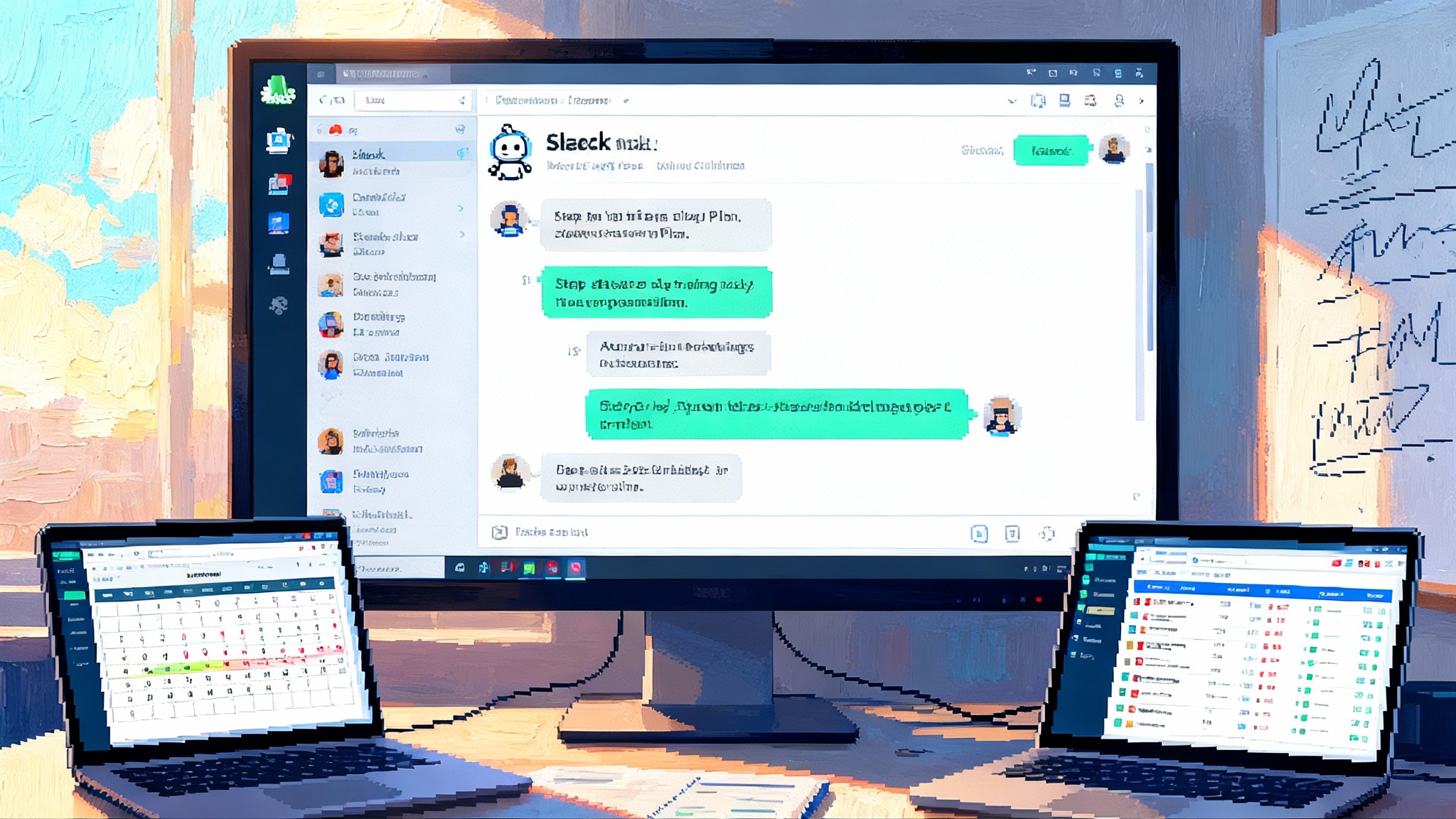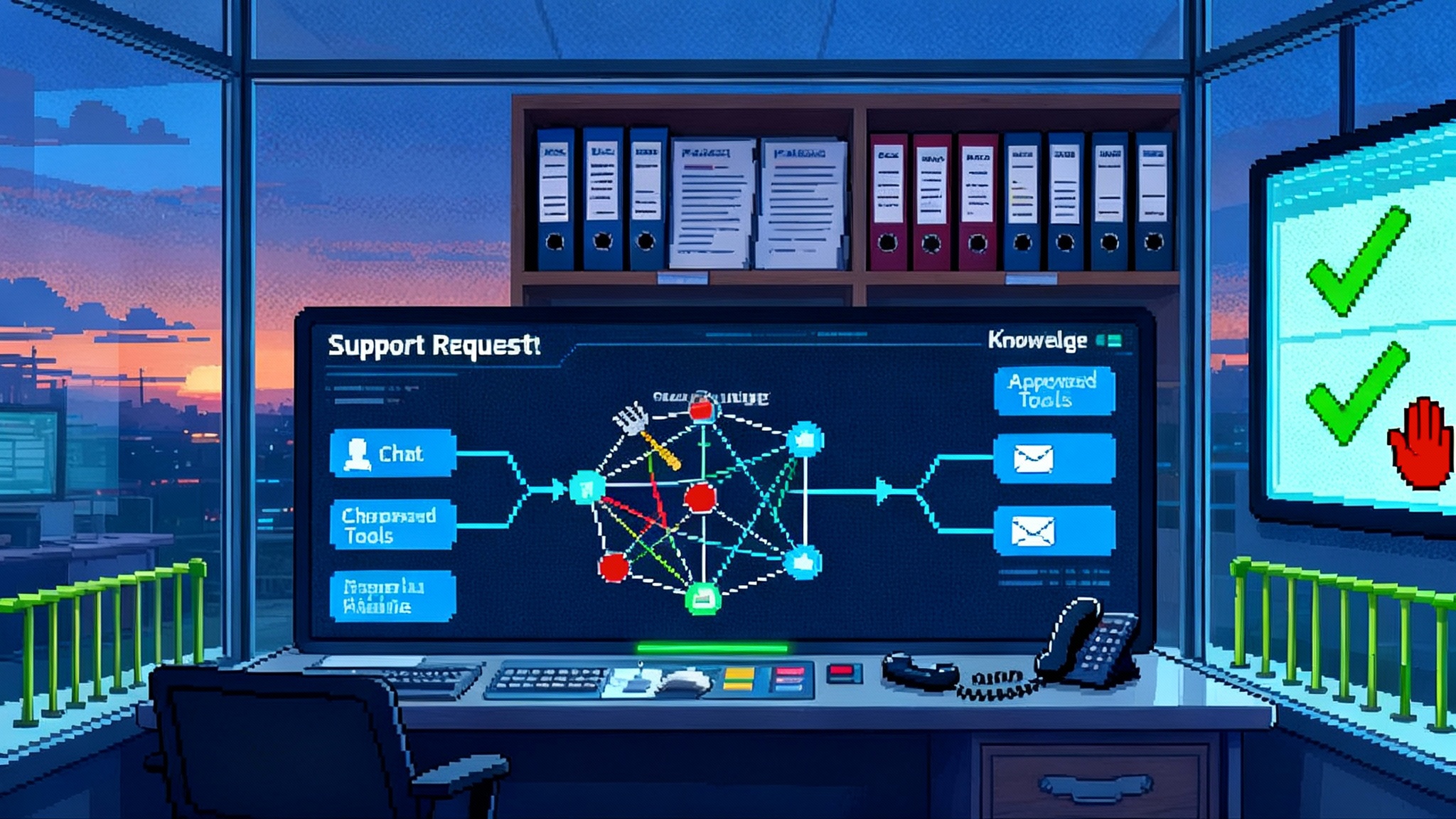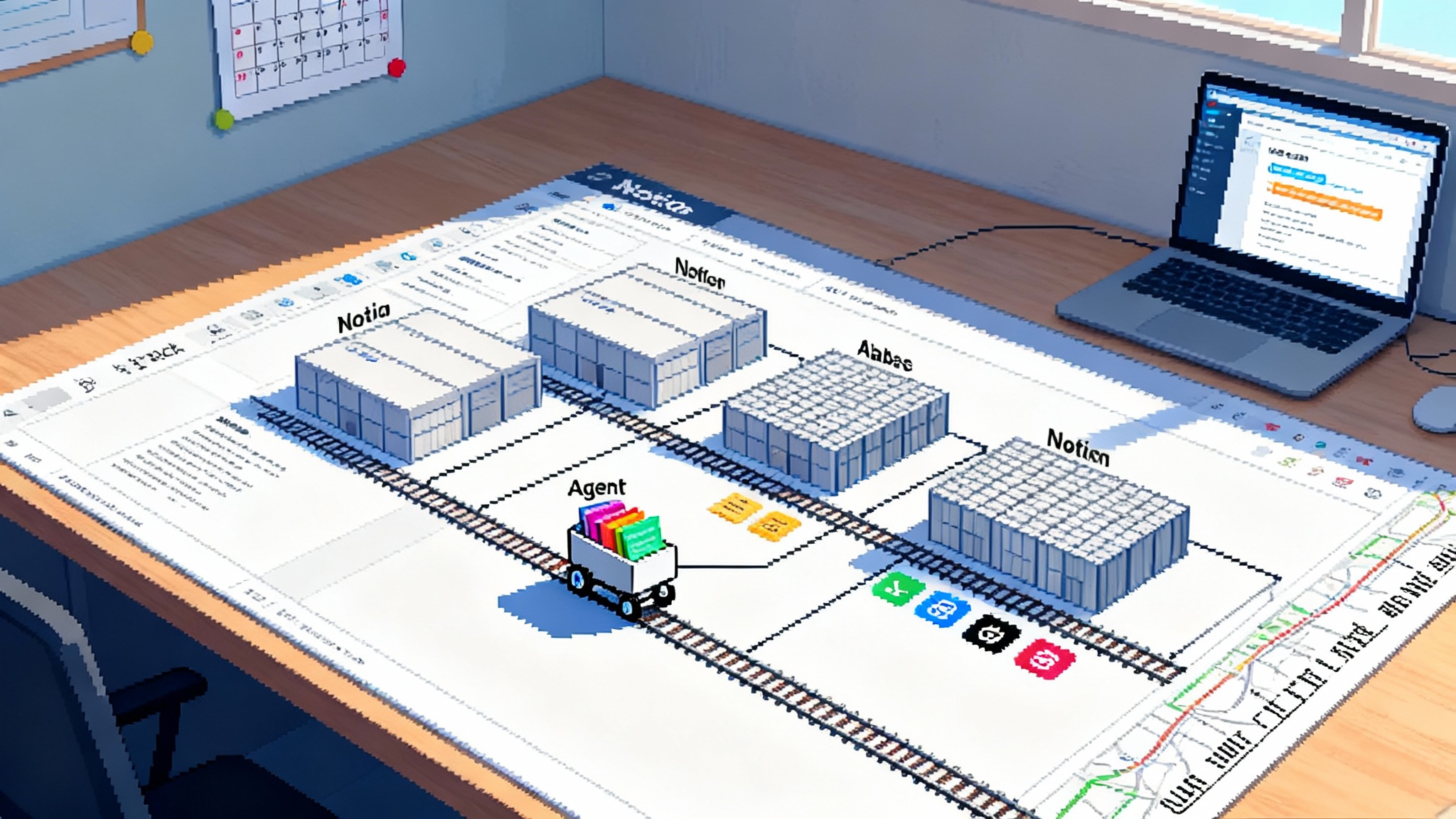SolarWinds AI Agent leaps AIOps from monitoring to action
On October 8, 2025, SolarWinds revealed an AI Agent that shifts AIOps beyond dashboards into agentic workflows. Learn what is live, what is coming, how it cuts MTTR and alert noise, and how to run a 90 day pilot.

The day AIOps got a field agent
On October 8, 2025, at SolarWinds Day, SolarWinds introduced its AI Agent and a slate of capabilities aimed at autonomous operational resilience. The company positioned the release as a move from passive monitoring to active incident handling. The announcement clarified what customers can use now, what is in Tech Preview, and what is planned for 2026, with a focus on real outcomes for teams already living in SolarWinds Observability and SolarWinds Service Desk. For the official details, see the SolarWinds press release on the launch.
Think of the AI Agent as a teammate that watches telemetry, forms a hypothesis, proposes next steps, and, within guardrails, triggers workflows. It is not a chatbot stapled to a dashboard. It is a set of agentic capabilities designed to summarize incidents, gather diagnostics, surface likely root causes, and step through predefined actions that reduce mean time to resolve.
What is live today and what is next
SolarWinds drew clear lines between capabilities available now and those targeted for 2026. Here is the breakdown in practitioner terms.
Live today
- AI Agent in Tech Preview within SolarWinds Observability. Query system health in plain language, compare metrics, and kick off guided diagnostic routines inside product guardrails. The goal is to answer the 2 a.m. questions fast: what changed, where, and why.
- Root Cause Assist is generally available. It correlates alerts, anomalies, and change events across entities such as Kubernetes, databases, and hosts to rank probable causes with evidence. This narrows the gap between receiving a page and understanding what likely broke.
- Dynamic Threshold Enhancements are available. Broader automated baselining reduces false positives and suppresses flapping so teams see fewer but higher signal alerts.
- AI Query Assist in Tech Preview. In database scenarios, it analyzes query patterns and proposes more efficient rewrites, which helps tame noisy neighbors and performance regressions.
Coming in 2026
- AI Incident Correlation for Service Desk. The system will cluster related incidents and suggest opening a problem record so break-fix work ties back to root cause management.
- AI Knowledge Base Generation for Service Desk. The agent will draft new knowledge articles from solved incidents and route them for human review so documentation keeps pace with reality.
- Automated Runbook Execution. First-touch diagnostics and reversible standard operating procedures can run automatically when conditions are met, gathering data or applying safe fixes before a human arrives.
The upshot is straightforward. SolarWinds is turning incidents into structured workflows that the agent can help run. The Tech Preview pieces focus on triage, analysis, and guided action. The roadmap extends that into correlation, knowledge creation, and controlled automation.
What the agent does in practice
Consider a realistic incident. Latency surges on a checkout service running in Kubernetes. Historically, an on-call engineer pivots through dashboards, traces, and logs, then pings the database team. With the AI Agent, the flow changes.
- The system detects abnormal latency and fires a single high-signal alert because dynamic thresholds suppress low-value noise.
- Root Cause Assist compiles a dossier: recent deployments to the checkout service, a spike in 5xx errors from a dependent payment API, a change in database query plans, and nodes reporting CPU throttling.
- The agent drafts an incident summary from that dossier. It proposes two branches: A) roll back the last deployment and B) apply a query rewrite to remove an unexpected full table scan. Each branch includes one-click commands or links to your runbooks.
- If guardrails allow it, the agent performs no-regrets actions automatically: collecting kubectl outputs, exporting flame graphs, and attaching artifacts to the ticket. Escalation rules notify the right people in paging and chat tools with the summary rather than a raw alert dump.
- The human on call validates the recommendation, triggers the rollback via the standard pipeline, and approves the safer query rewrite for staging. The incident resolves in minutes instead of an hour.
This encapsulates the difference between an alerting tool and an agent. The alerting tool shows what is wrong. The agent narrows the search space, provides evidence, and helps you take the next best step without leaving the flow of work.
Why agentic workflows cut MTTR and alert noise
Agentic workflows shorten mean time to detect and mean time to resolve because they change the unit of work. Instead of juggling a stream of atomic alerts, the system produces a smaller number of composed incidents with context and a plan. Three mechanisms do the heavy lifting:
- Dynamic thresholds and suppression reduce noise. Expanded baselining across metrics means fewer false positives and fewer duplicate pages. Teams win back attention.
- Cross-entity correlation collapses search time. Root Cause Assist stitches together events across services, databases, and infrastructure. Engineers spend less time pivoting and more time testing a plausible cause.
- Evidence-packed summaries accelerate decisions. The agent drafts the initial narrative a human would assemble after 20 minutes of digging. People spend time on approvals and action, not transcription.
To quantify impact, track four simple metrics across a pilot: mean time to acknowledge, mean time to identify, mean time to resolve, and alerts per incident. If the agent does its job, the first three go down and the last stabilizes near one.
Guardrails that make it deployable in the enterprise
SolarWinds emphasizes two governance pillars to make agentic operations safe in production: Secure by Design and AI by Design. The first focuses on software build hardening and development processes. The second sets product principles for privacy, accountability, and runtime transparency. Review the AI by Design principles to understand how the company intends to handle access, explainability, and human oversight.
In practical terms, operations leaders should validate three implementation details before granting broader permissions:
- Scoping and permissions. Limit what data the agent can see and which tools it can invoke by environment. Staging can be more permissive to build trust. Production should require explicit approvals for state-changing actions.
- Audit trails. Every step the agent takes should be logged and attached to the incident. That makes postmortems faster and keeps change management intact.
- Rollback-first automation. Begin with diagnostic and reversible actions. Runbooks that gather state carry low risk. Changes that alter state should include tests, time-boxing, and automatic reversion.
If these three controls are present, the agent can work inside your change processes rather than around them.
Integrations that matter on day one
Agents earn their keep at the seams between tools. Several integrations are key for immediate value and for the 2026 roadmap.
- Paging and chat. PagerDuty, Opsgenie, Slack, and Microsoft Teams integrations ensure the right human sees the summary and evidence in their flow of work. These are already supported in notification services so you do not need to rewrite paging rules.
- Ticketing. ServiceNow and SolarWinds Service Desk integrations let alerts create or update incidents with rich context. As AI Incident Correlation matures, expect automatic problem records linking clusters of related incidents.
- Cloud and Kubernetes. Native ingestion from AWS, Azure, Google Cloud, and Kubernetes enables multi-layer correlation. The agent is only as smart as the telemetry it can see.
- SNS and webhooks. Amazon Simple Notification Service and generic webhooks keep the system flexible when actions must route into a custom automation or platform workflow.
The pattern to watch is simple. When the agent summarizes, recommends, and then triggers actions through well-tested integrations, you get value without forcing the team to adopt a new toolchain.
How this fits the broader agent wave
AIOps is a natural early adopter for enterprise agents. First, outcomes are measurable. Second, telemetry is rich and structured. Third, actions can be scoped, reversible, and audited. In parallel, other parts of the enterprise are also moving toward agents. We have shown how chat becomes the enterprise command line in our analysis of Slack’s evolution in Slackbot grows up. Amazon’s latest platform moves show how agents become the unit of work, as detailed in Quick Suite goes GA. On the browser side, Google’s approach demonstrates how Gemini 2.5 Computer Use can orchestrate multi-step tasks inside user interfaces, as discussed in agents in your browser.
Together, these trends add up to a shift in how work gets done. AIOps has three advantages that make it the first beachhead.
- Clear, measurable outcomes. Mean time to acknowledge, mean time to identify, mean time to resolve, change failure rate, and alert volume are simple to baseline and improve.
- Rich, structured telemetry. Logs, metrics, traces, and change events provide context that reduces guesswork.
- Safe, reversible actions. Runbooks, rollbacks, and feature flags create safe actions that an agent can perform with approvals.
- Aligned governance. Incident command, change management, and problem management already exist. Agent logs reinforce compliance rather than complicate it.
- Vendor-supported integrations. Paging, ticketing, cloud, and chat are integratable today.
How to run a 90 day pilot that proves value
A pilot should pay for itself within a quarter. Here is a concrete plan you can lift and run.
- Pick a bounded service. Choose a service with frequent alerts and clean rollback paths. A payments edge service, a marketing site, or an internal support application are good candidates.
- Wire full-stack telemetry. In SolarWinds Observability, ensure coverage for logs, metrics, traces, deployment and change events, and on-call routing.
- Define guardrails. List allowed agent actions by environment. Production begins with diagnostics only and requires approval for state-changing fixes. Staging can be more permissive to build trust.
- Curate three golden-path runbooks. Prepare one for an application error surge, one for a database performance regression, and one for a dependency timeout. Include reversible steps and known-good snapshots.
- Align success metrics. Baseline mean time to acknowledge, mean time to identify, mean time to resolve, and alerts per incident for the past 30 days. Set targets such as a 30 percent reduction in time to resolve and 40 percent fewer duplicate or low-signal alerts.
- Enable correlation and thresholds. Turn on Root Cause Assist and Dynamic Threshold Enhancements. Configure notification services for paging and chat so the right teams see agent summaries.
- Rehearse a game day. Trigger conditions in staging to validate summaries, approvals, and runbooks. Confirm that every agent step is logged.
- Run in production with diagnostics only. Operate for four weeks. At the midpoint, allow one approved state-changing action in a narrow window, such as restarting a non-critical service instance or toggling a feature flag.
- Review and expand. Compare outcomes to baseline and capture two incident narratives where the agent saved meaningful time. Use those stories to expand to a second service.
This approach turns agentic operations from concept into capability with minimal risk and clear evidence.
What to watch through 2026
Three roadmap items will determine how far and how fast teams move toward autonomous resilience.
- Incident correlation in the service desk. If the agent reliably suggests problem records from clusters of incidents, teams spend less time chasing duplicate symptoms and more time eliminating root causes.
- Knowledge base generation. Drafting articles from solved incidents is a classic time sink. If the agent keeps the corpus fresh and routes drafts for approval, self-service rates should rise and ticket volume should fall.
- Automated runbook execution. Once reversible actions prove safe under approval, expect organizations to let the agent run them automatically under defined conditions. That is where the mean time to resolve curve bends the most.
Two gating factors will shape adoption. First is change-control maturity. Teams with consistent runbooks and approval paths will move faster. Second is integration hygiene. Teams with solid paging, ticketing, and chat integrations will see immediate value because the agent plugs into their flow of work.
The bottom line
SolarWinds is not promising magic. It is offering a practical agent that can read the room, build a case, and help run the play. The Tech Preview already reduces alert noise and speeds triage, and the near-term roadmap points to correlated incidents, living knowledge, and controlled automation. If you start with clear guardrails and measure what matters, an AIOps agent is a safe way to put enterprise agents into production within the next 6 to 12 months. The fastest wins will come from turning alerts into incidents with evidence, then turning incidents into actions with approvals.
Monitoring tells you something is wrong. An agent shows you why and helps you fix it. That is the leap from dashboards to resilience.








